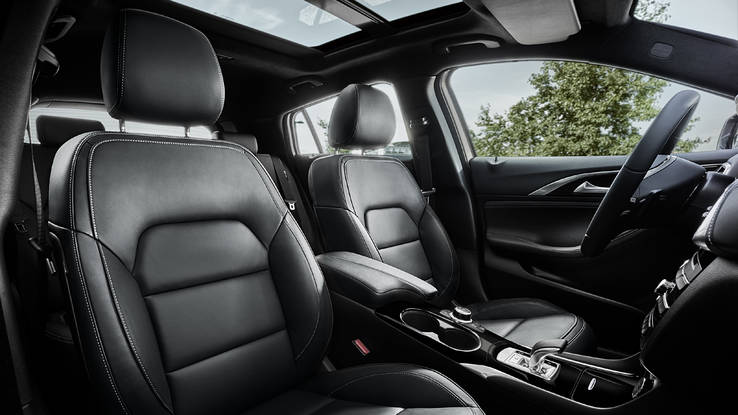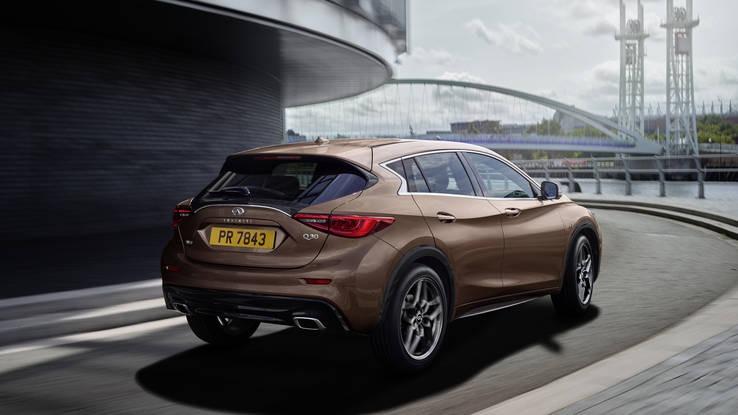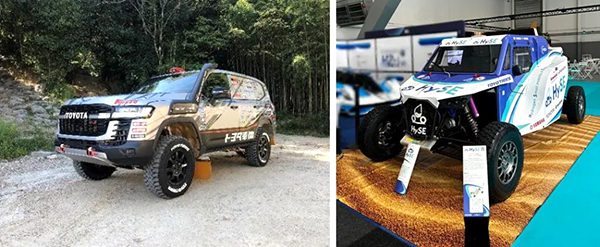Luxury crossover, meet hatchback
Look beyond the gorgeous exterior of the Infiniti Q30 and you’ll find something even more intriguing: this is, almost, the Mercedes-Benz A-Class hatchback you can’t buy in
How is that? The Infiniti Q30 is the first whole-cloth vehicle to come to Infiniti from the Renault-Nissan alliance with Daimler, and it’s based on the A-Class architecture.
There are actually several significant differences between the Infiniti Q30 and the Mercedes-Benz A-Class, but the core competency of that architecture (also used in the Mercedes-Benz CLA-Class and GLA-Class) shines through. The subframes, suspension geometry, engine, and transmission are all directly from the Mercedes A-Class architecture. Each has been re-tuned for the Q30’s specific mission, however, resulting in a car with a palpably different—but still brilliant—character.
Most notable, to those who’ve driven an example or two of the Mercedes interpretation of the architecture, is the suspension tune. Rather than using adjustable dampers—or even offering them—as in higher-trim models of the CLA and GLA, the Q30 uses a fixed damper and spring setup. That non-adjustable system has a trick up its sleeve, however, in the form of rebound springs—springs which act in the negative direction on the inside wheels during cornering to help reduce body roll while maintaining compliance—sort of like a one-sided anti-roll bar. Generally speaking, the suspension does a fantastic job of both. Like all non-dynamic suspensions, there are limits to its compliance and control, but the compromise chosen permits a great deal of both sporty driving and city comfort.
In the Q30S 2.0t model I tested on the roads around

2017 Infiniti Q30
A huge chunk of the credit for that engaging drive is owed to Infiniti’s suspension tune, to be sure, but just as much of the fun comes from the combination of the 208-horsepower, 2.0-liter turbocharged four-cylinder engine and seven-speed dual-clutch transmission—Infiniti reckons it’ll rip off a 7.3-second 0-62 mph run. Both have, again, been built by Mercedes, but the software controlling both engine and transmission (and their interaction) has been re-done by Infiniti. The result is a lively and linear torque curve (and hence power delivery) from the engine, and smooth, positive shifts from the transmission. In-gear acceleration with the Infiniti Drive Mode Selector in “Sport” feels for all the world like that of a manual gearbox—direct, hooked up, and solid. Just like it should.
When it comes to actually shifting the dual-clutch, however, we’re left wanting more. None of the applications of the Mercedes seven-speed dual clutch have been extremely sporting in their demeanor, save perhaps the AMG variants in Sport+ mode, but in the Q30, the lag time between request (a tap of either steering-wheel-mounted shift paddle) and response (the actual gear change actuated within the transmission) seems much greater; so great, in fact, that it’s considerably less fun to try to click through the gears yourself than it is to just let the car’s brain do it for you. Plus, if you take the current gear to redline—even in maxed-out sport mode—the Q30 will up-shift for you, rather than holding at the limiter, so it’s not even fully manual in manual mode.
Another concern for the dynamics of the U.S.-bound Q30 is the lack of all-wheel drive. The Q30S model I tested in
All of these performance-related concerns are somewhat beside the point for most Q30 buyers, however. Sure, the Q30S buyer might want to know that it’s no GLA45 AMG, but for everyone else, these are non-issues. And they should be non-issues for the Q30S buyer, too—provided Infiniti gets the price right. Put it right on top of the competing German offerings (Audi Q3, BMW X1, Mercedes-Benz GLA — ranging from roughly $ 33,000 to $ 35,000 base price) and the Q30 will likely come up short—it just doesn’t offer the high-tech goodies or the name-brand cachet of the establishment. But price it a significant portion of a year’s salary below those stalwarts, and these things may well fly off the shelves.

2017 Infiniti Q30
The Q30 is, arguably, the best looking vehicle in the segment, and that includes the very handsome Mercedes with which it shares some of its nether-regions. The interior is pretty smart-looking, too, with leather and Alcantara options and fit-and-finish tolerances that put it in a league near Audi, and perhaps a step beyond BMW. It lacks the finer woods you’ll find in the Mercedes, of course, but to younger eyes, the Q30’s cabin may be the better looking. It’s a sharp car, inside and out.
It’s also very well packaged, with room for four adults plus a fair amount of gear behind the rear seats (Infiniti claims 13 cubic feet of cargo area with the rear seats up). Even six-footers can sit in the back seat without significant compromise; I know because I’ve done it. The seats, front and rear, are comfortable and supportive, though buyers of the Q30S who opt for the sport seats may find the bolsters somewhat less bolstered than they’d like, especially on the seat bottom cushion. While the examples I drove in
There will be two tiers of trim—Premium and Sport—for the Q30 when it arrives in May or June of 2016; the QX30 will fill the all-wheel-drive gap as a sort of off-roady companion model to the Q30 line not long after.
In a vacuum, the Q30 delights and surprises with its refinement, comfort, handling, and efficient use of space. But precise features, options, packaging, and pricing for the U.S.-market Q30 will wait for next summer’s launch—as will any judgment on its relative merits within the market.





























